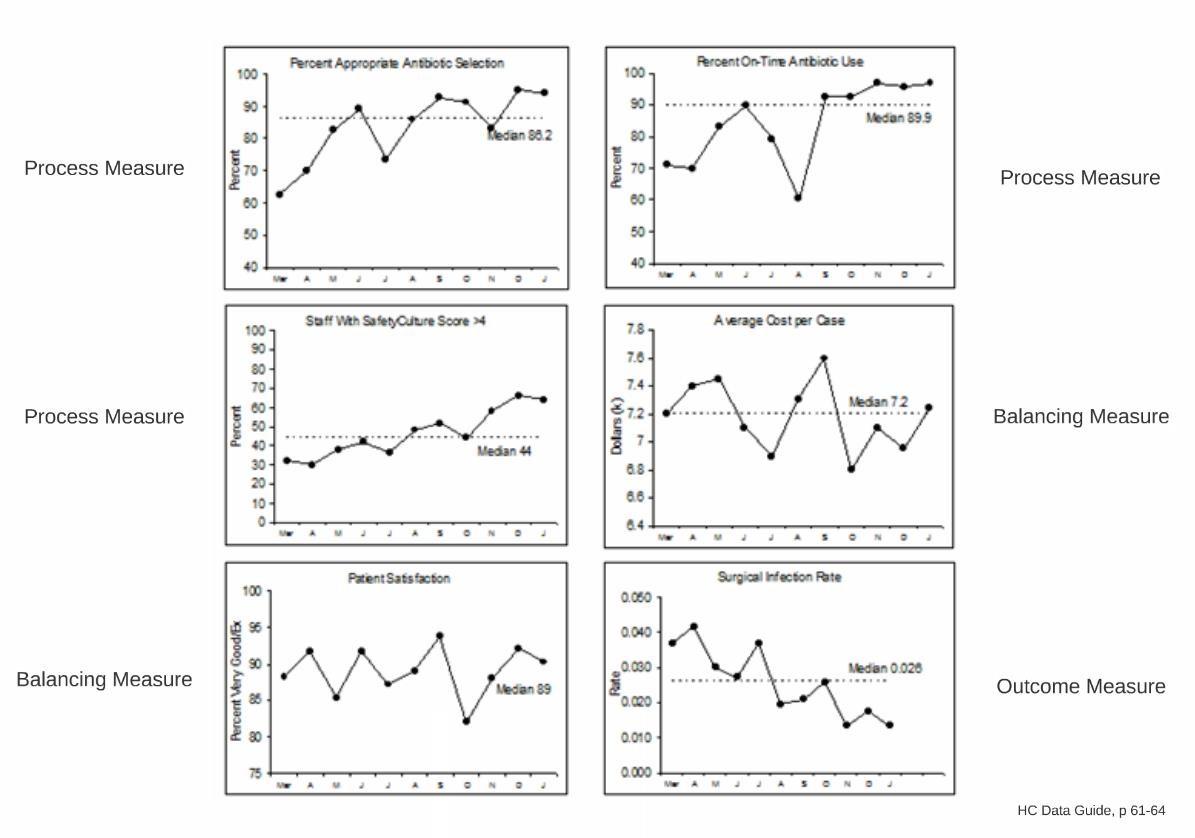Meaning of a Measurement Strategy
A measurement strategy is a model that is meant to improve the safety of patients. The model explains what we want to accomplish, how to monitor change and determine whether it is making any changes and the modifications that can be employed to ensure that improvements are made (Kilbourne et al., 2018). The model can be summarized through a PDSA cycle that involves a plan, do, study and act.
Outcome Measures
First, the outcome measures the Customer’s voice that entails a definition of how the system is performing its work through the different components that are specified by the system. Process measure is another which determines the work process of a system. Is the system performing the tasks as we expected it to do? Finally, the balancing measures that will give an explanation of what will happen to the system when improving the outcome and the process measures. It covers the consequences that were not anticipated and how the system will tackle them.
Chart showing how the surgical infection data will be collected and the corresponding balance measure

Step 1: Plan
A plan on how to take the measurement and the steps that could lead to a successful recording period.
- When taking the measurement, the system should be specific about the methods and the equipment used.
- Criteria for exclusions for the decision made are identified.
- Data is clear and unambiguous.
In planning, the first step is to carry out research on the proposed system to record data for patients in the health center using the GP data system. The system mainly deals with the patient’s data to ensure that change is observed after its implementation. The data will be collected in hospital using the system during the implementation time. The main objective of the system is to ensure that data from patients is used to make a change in the health of the patients to ensure health living. Different types of fact-finding techniques are employed to ensure that all the data is recorded. This includes data collection forms, control charts, survey methods and run charts.
Measurement Strategy
Step 2: Do
This step is concerned with implementing the changes observed that was not part of the plan in implementing the data collection method. First, the system needs to be set to analyze data of the patients and record the status of the corresponding patient to determine whether there is an improvement or the different conditions are worsening (Kilbourne et al., 2018). Consequently, the data should be stored for a long period of time to ensure that the progress of the health facility is noted to be able to determine its state. There are some things that went wrong during data collection such as misinterpretation of data and hence a change was necessary for accurate reference in the future.
Step 3: Study
Mapping of measures

Analysis of data based on current knowledge
Comparison of data is made based on the current system that seeks to make a change in the patient’s health. First daily records are taken seriously and each patient will be required that data filled into the system. The measures taken are to ensure that any slight change in the health of the patient is recorded and that analyzing the change through the measurement of weight each day leads to a positive improvement. The balancing phase ensures the service user is satisfied with the changes being made and that the system is making a positive impact on their lives. It ensures that the patient is satisfied with the life he leads each day after every month.
Step 4: Act
The main objective of the system was to ensure that change is realized by the users of the system and is more useful than when it was not available. The people who will be affected by the system are mostly the ones living with the lifestyle diseases such as obesity. The system will enable them to overcome lifestyle dangers associated with the infections, such as high blood pressure. Over the recent months, there have been positive results recorded after employing the system. From the weight measurement taken daily, there was a record in reduction of weight. The dangers of some lifestyle diseases were greatly reduced due to the effect of exercise
However, there are some measures that need to be implemented to ensure that everyone adheres to the system rules strictly. Some changes that need to be made include, recording the outcomes of the different data more often. Majority of the data was taken on a weekly basis. To ensure that the system is more convenient, the data collection exercise will remind the users to be engaged in the system requirements. Consequently, the system’s efficiency will be determined by applying it more often, and changes of its inefficiency will be determined. In the next phase of data collection, the system will include the resolution that was made from the current phase.
Reference
Kilbourne, A. M., Beck, K., Spaeth‐Rublee, B., Ramanuj, P., O’Brien, R. W., Tomoyasu, N., & Pincus, H. A. (2018). Measuring and improving the quality of mental health care: A global perspective. World Psychiatry, 17(1), 30-38.